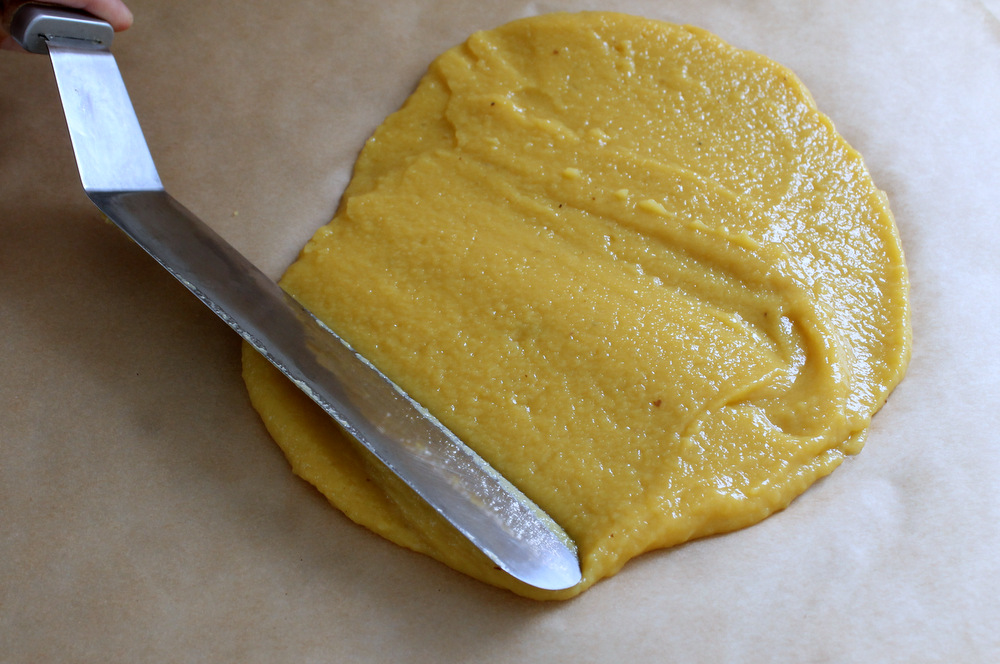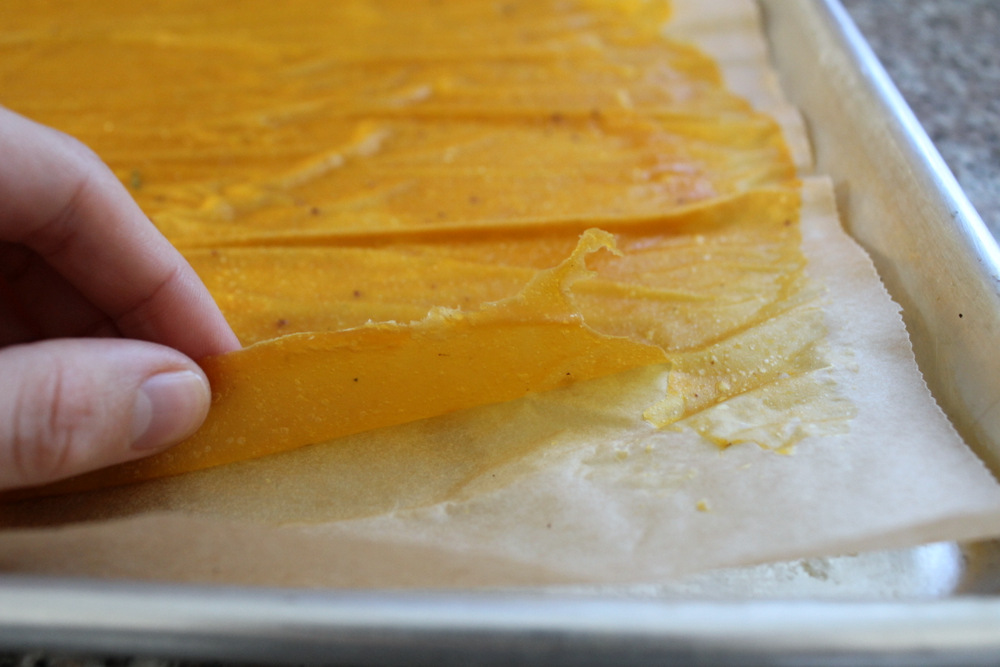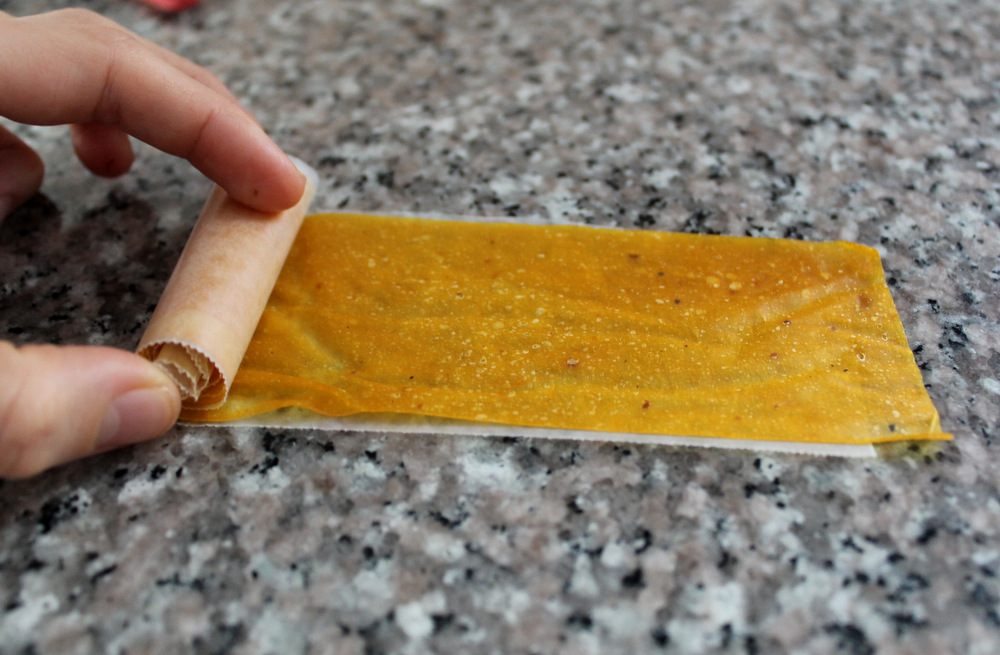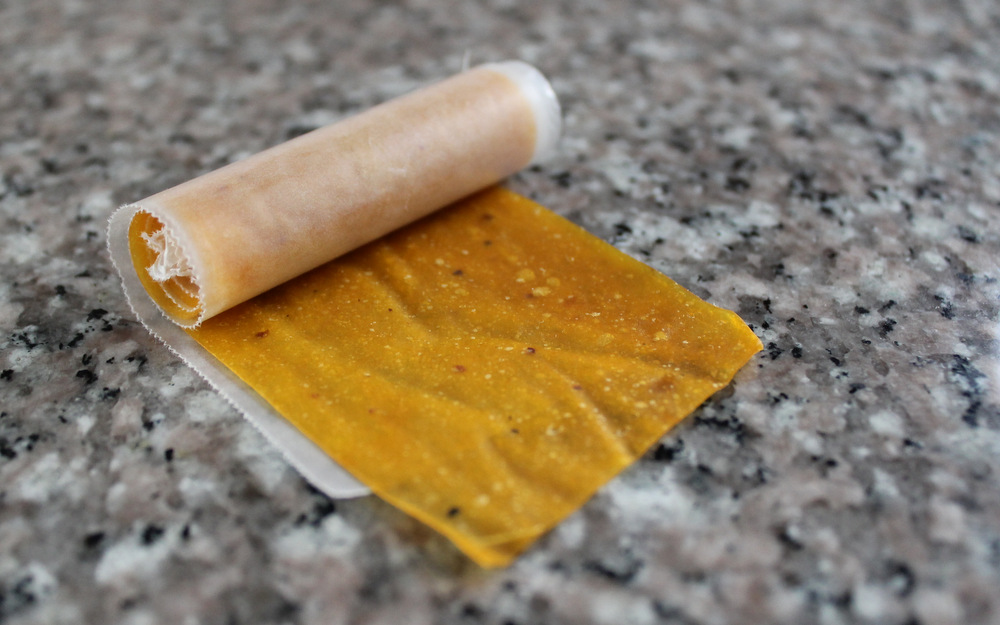
I was not one of those “lucky” kids who got to feast on fruit roll-ups at lunch every day. We’d get the brightly colored, sticky sweet treats every once in a while (the rainbow colored rolls with the punch-out animal shapes that would stick to the roof of my mouth were my favorite), but I was far more likely to have one of those dreaded fruit leather bars from the natural grocery for dessert. Of course, this meant I coveted the other sugar-filled lunch boxes that surrounded me at my elementary school table and still think back fondly on fruit roll-ups.
I’m not sure that I would ever want to go so far as to attempt to re-create the exact flavor of those childhood treats; my taste skews far more savory than sweet these days. But it’s easy to adapt the basic premise of the roll-up (dehydrated fruit puree) to suit just about anyone.
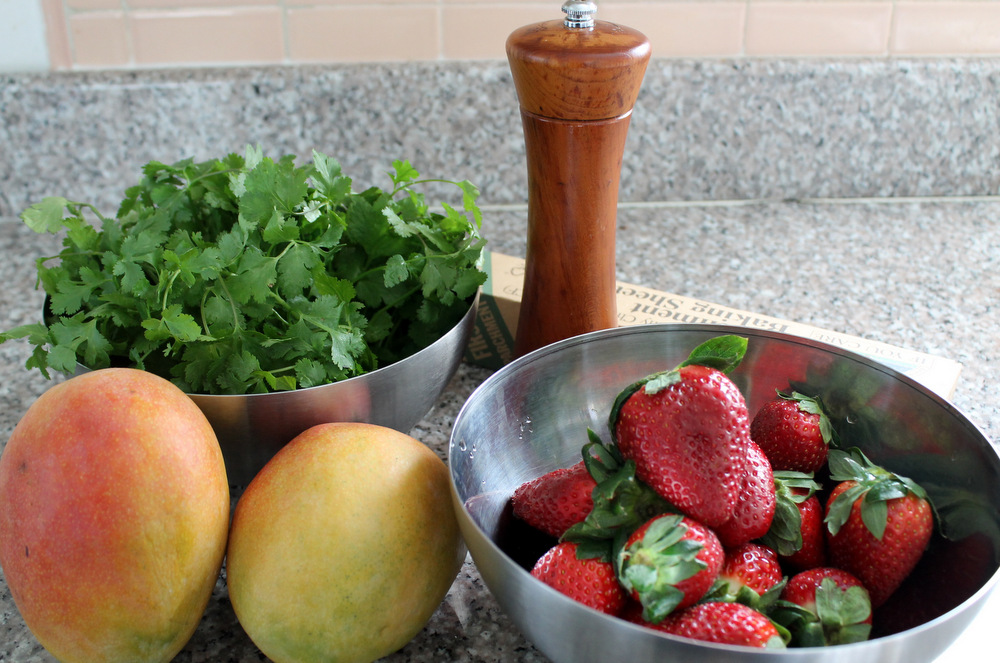
The best place to start is by using super-ripe fruit. If your grocery store has a sale section for produce, check there first. You don’t want to buy rotten fruit, of course, but the riper the fruit is to start, the sweeter it will be. Super-ripe fruit will need little, if any, additional sweetener. I like to be creative with my fruit roll-ups and add complementary herbs and spices to the fruit. I also like to make a couple of batches of roll-ups at a time to maximize my oven space. For these roll-ups, I’m pairing mango with fresh cilantro (and Sichuan peppercorns, not pictured) and strawberries with freshly ground black pepper. If you’re making these for kids or picky eaters, feel free to use milder flavorings like vanilla, or to skip the flavorings altogether.
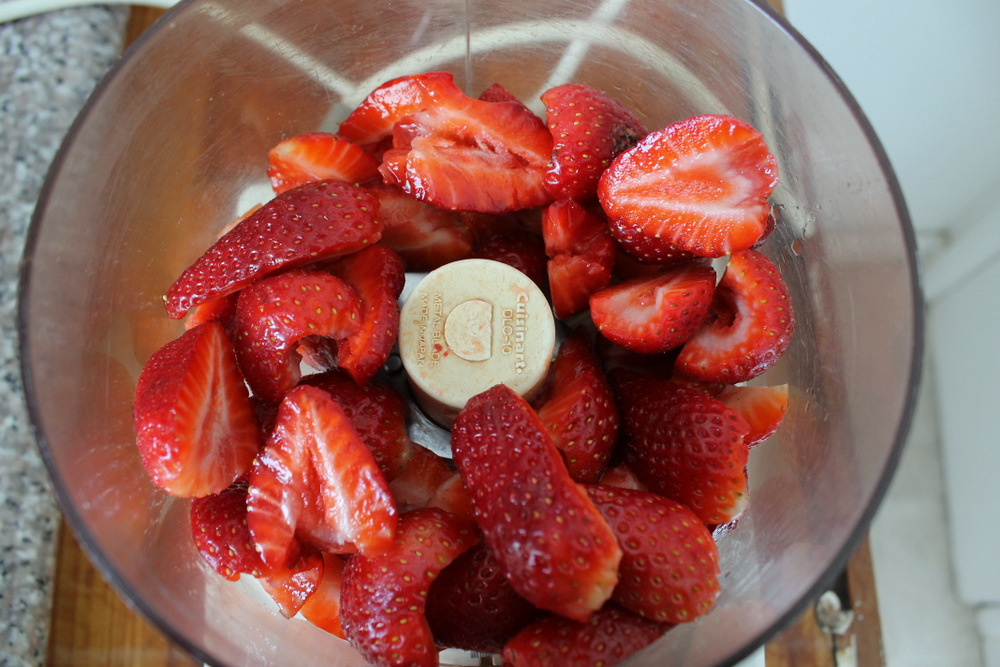
I like to use about a pound of chopped fruit per batch of fruit roll-ups. This means that for fruits with thick skin and a large pit, like mangos, I need to buy more like 1-and-1/2 pounds of whole fruit. If shopping in the aforementioned sale section, I’ll pick out a bit extra to account for the inevitable trimming of bruised or molded fruit. With berries or other fruit with little-to-no trim, I’ll pick out 1 pound to begin with. Once the fruit is chopped, I put it all in the bowl of a food processor and let it run until the fruit is completely pureed. (A blender will work too, as long as the fruit is soft).
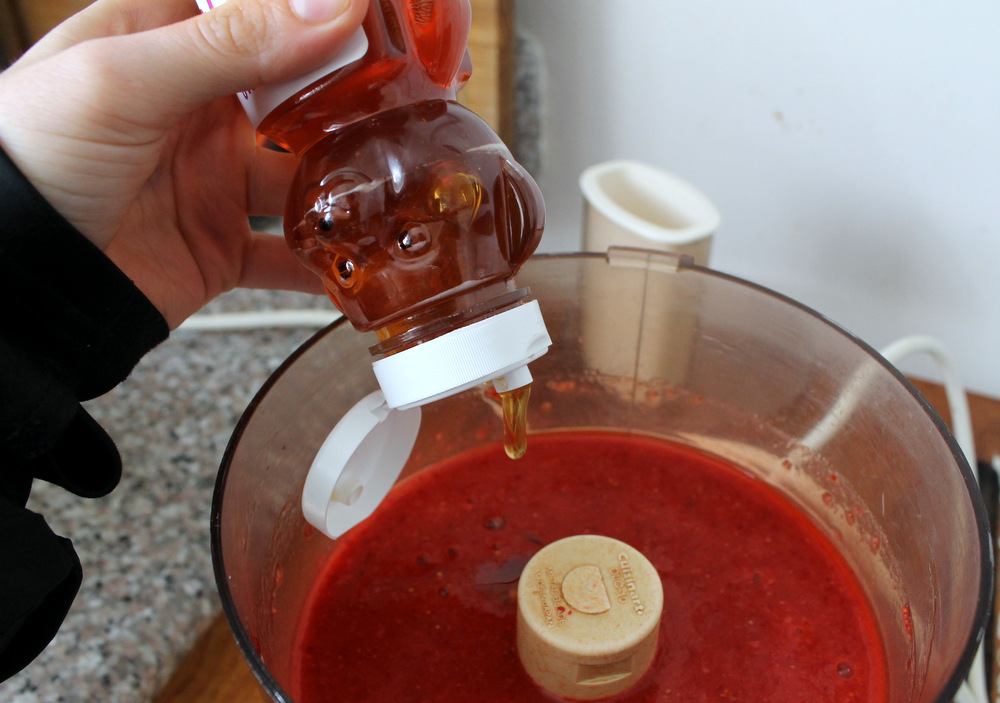
At this point, I’ll taste the puree and see if it needs any sweetener. I like to use honey instead of sugar because I like the flavor, but you can use any sweetener you’d like. The mango puree didn’t need any honey, but the strawberry did. I added a teaspoon or two, until I liked the level of sweetness. It’s important to remember, though, that the sweetness will concentrate in the oven. Don’t go too crazy here. I also like to add a pinch of salt to the puree to bring out the flavor of the fruit. You could also add lemon juice, if you’d like.
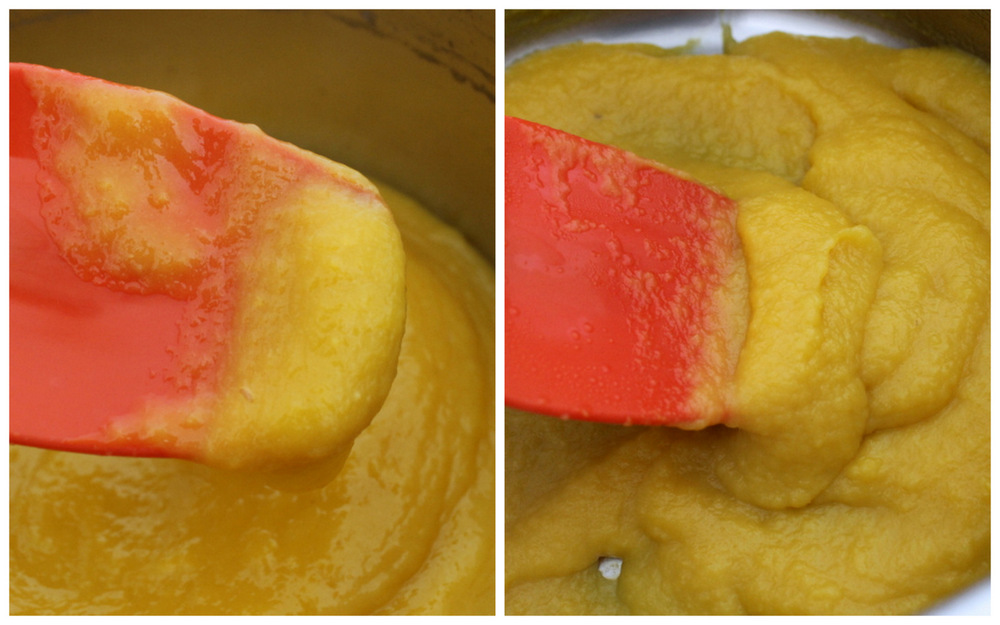
Next, I like to reduce the puree a bit on the stove before popping it into the oven. This step is not really necessary, but it does cut down on the amount of time you’ll need to monitor the oven. My oven is pretty finicky and requires attention no matter what I’m cooking, so I like to reduce the amount of time I’m dehydrating the fruit as much as possible. I simmer the puree for 10 to 20 minutes, or until it has noticeably thickened and looks more like applesauce than soup. Make sure to stir frequently as the sugars in the puree will want to scorch.
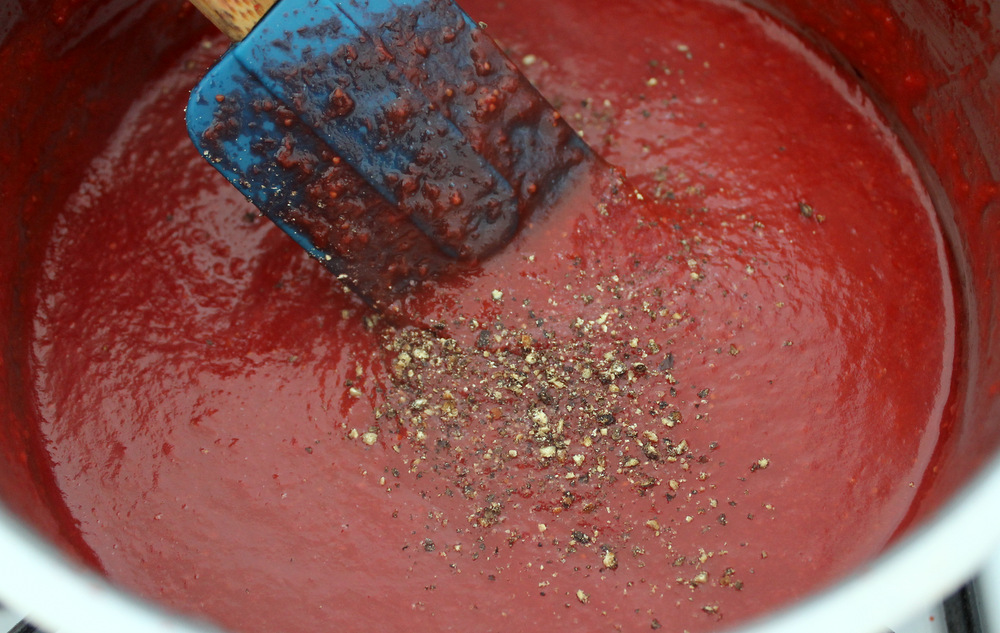
Once the fruit is reduced, I like to add any additional flavorings. I save this step for the last minute so that their intensity remains strong. Fresh herbs, like cilantro, work better when they’re steeped in the warm puree and then removed before dehydrating. Spices, like black pepper, will go into the puree and stay there.
